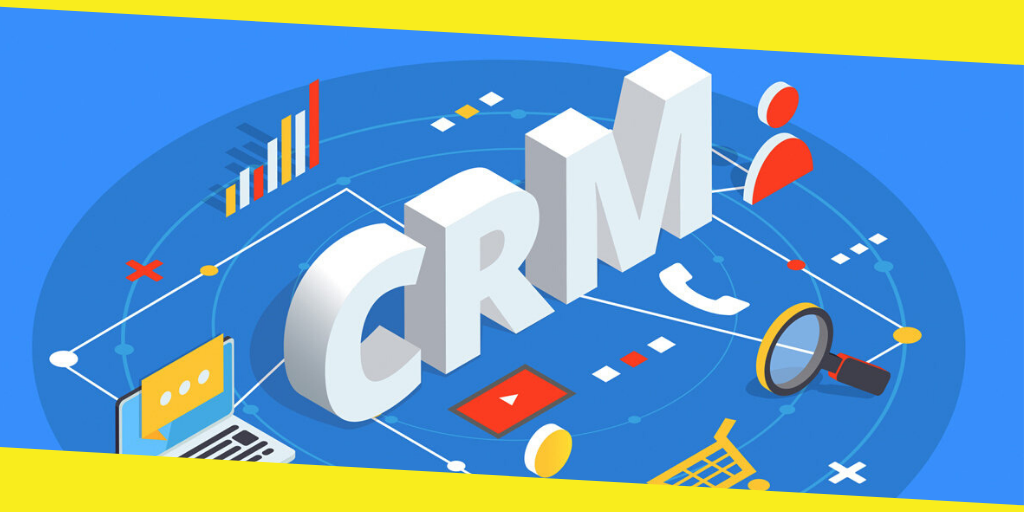Different Types of CRM Software Available in 2020

CRM software, as the name suggests, is a tool that allows organizations and businesses to manage and improve their relationship with the customer efficiently. It takes care of all the interaction between the consumer or a potential lead and the brand.
Basic tools in a CRM system include database management, marketing, sales, and service support. But one CRM doesn’t fit all, so depending on your business needs, you may need a more specialized CRM software.
To help you get started, we have broken down the three primary types of CRM systems as follow,
Contents
Toggle1. Operation CRM
As the name suggests, ‘Operational CRM’ is all about streamlining the three main processes of your organization i.e., Sales automation, Marketing Automation, and Service automation. Every interaction that your business has with potential and also your regular customers is possible using the operational CRM
The primary purpose of operational CRM is to provide you with support from generating leads to providing after service to the customers.
Sales Automation
The sales processes of a company can be easily automated using sales automation. The sales automation feature sets the standard within the organization to generate more leads and acquire new customers while also taking care of the relationship with the existing customers.
It also has the ability to handle the time-consuming task of creating new contacts so as to free the sales reps to work on selling the items. Sales automation also includes various CRM modules, such as inventory management, lead management, contact acquisition, and sales forecasting.
Marketing Automation
Marketing automation serves as a way to find the best path to offer products to consumers and also on how to approach new customers. Even though marketing automation can work as a standalone solution, it is mostly used by incorporating it with other operational CRMs.
Campaign management is the primary module involved in marketing automation. In it, the information is organized in a way such that it can meet the customer’s demands and also increase the revenue of the company more efficiently and effectively. Marketing automation allows you to automate certain things that target customers at different stages of the sales funnel.
Service Automation
A higher level of customer service is what service automation provides. It enables businesses to build strong relationships with the customers and offer them the best quality of service. You can also set up a set of questions often users ask in their queries and provide a list of them before the customer so that they can turn to it for answers. Today certain automatic services like chatbots are used popularly by many companies out there.
2. Analytical CRM
A CRM at its base is a database filled with information about your customers. Data includes details such as who is in the pipeline, current open queries, number of products sold, and many other details. All these stored good, but if you don’t use it to grow your business, it is rendered useless.
Analytical CRM is a great way to use the vast amount of data you have collected. It helps the management make much better decisions, help marketing executives to understand the campaign’s effectiveness and support to build strong customer relationships.
Data Warehousing
This is the first step in an analytical CRM. Data warehousing means a place where you integrate and store a variety of data from sources. This is the place where data from different departments. Once you have all the customer’s data in the repository, you can then run the analysis and generate new reports.
Data Mining
Data mining begins after you have collected all the data required. Analyzing all the collected data obtained is called data mining. It is the process where you can make use of the raw data available and turn it in useful insights.
Online Analytical Processing (OLAP)
OLAP is a powerful technology for the discovery of data, and it offers capabilities such as unlimited report viewing, complex analytical calculations, and predictive ‘what if’ situations. It forms the foundation for the business intelligence tools, which allows you to dig deeper into the available data and can make proper decisions accordingly.
The feature of focus for OLAP is its ability to predict the future ‘what if’ scenarios. Instead of doing the traditional guesswork, you can actually leverage OLAP and get more accurate data-driven results.
3. Collaborative CRM
Collaborative CRM, also known as strategic CRM, shares the customer information among the company’s different departments like the sales team, marketing team, service, and support team. For example, in a situation where the feedback from the support team could be useful for the marketing team to design their marketing campaign better.
In most realistic scenarios, all departments work as independent units, and there is often a situation where they are needed to work together. Collaborative CRM unites all of them with the only goal to improve the customer’s experience with the company.
Final Thoughts
Whether you choose an operational, collaborative, or analytical CRM, the key features in all three will benefit your company differently based on your specific situation. There are a lot of solutions out there, and depending on your particular need, you can first try a trial version of the CRM system and then choose accordingly.
No matter which customer relationship management software you choose, you will definitely get more return that you invest in your system.
Recommended For You
2 Most Important but Cheap Legal Entity in India
Most Inside
Most Inside offers high-quality recommendations and valuable updates to enhance all aspects of your life, providing premium guidance and enriching experiences.




